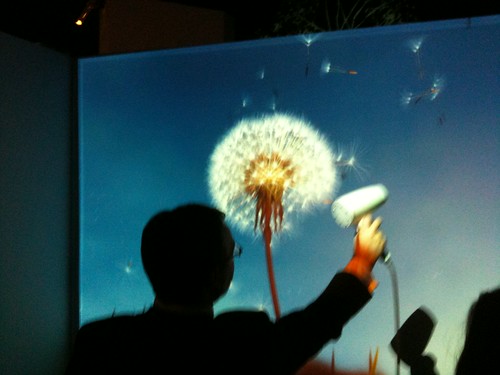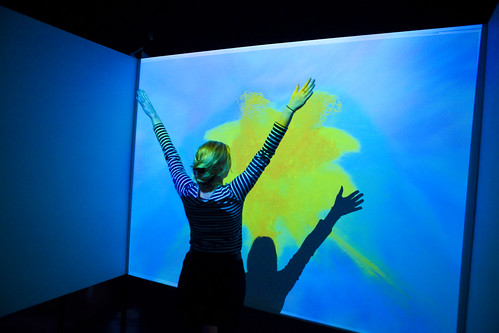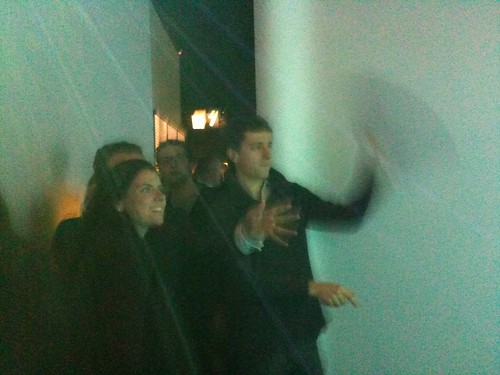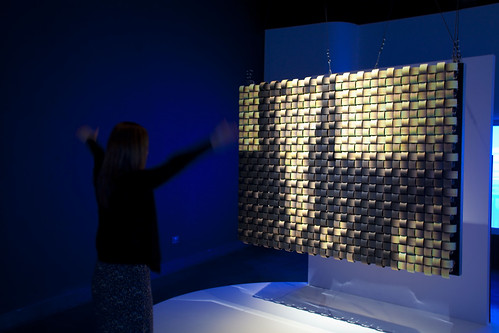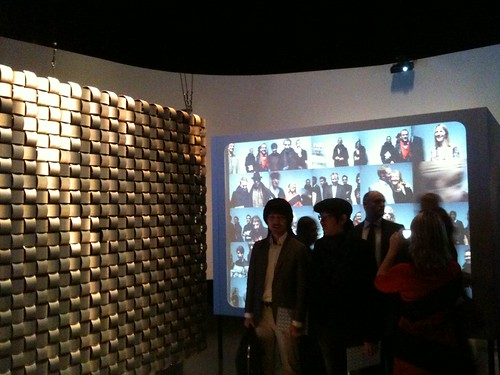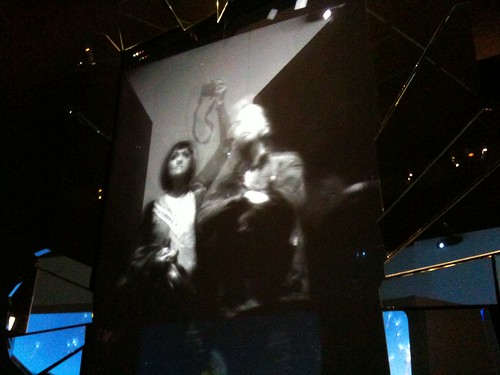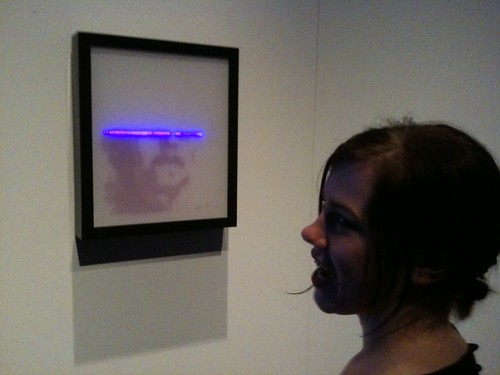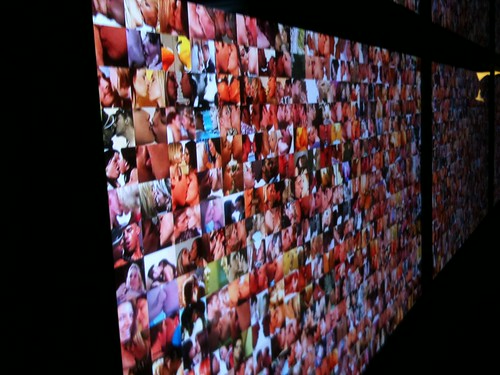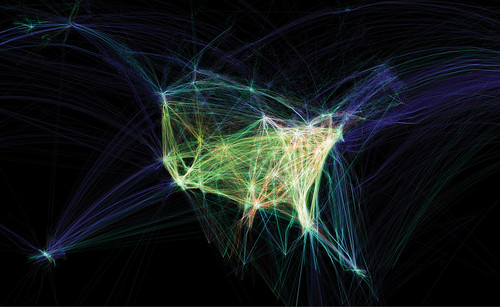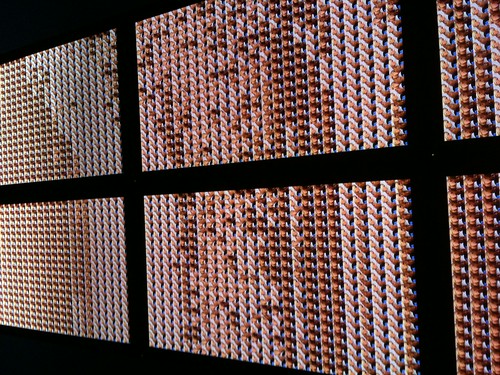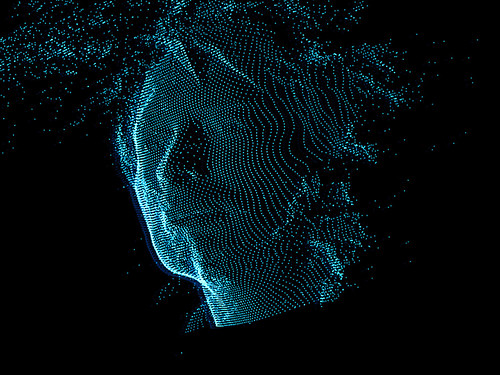Tuesday, 9:53am
8 December 2009
Electric Narcissus and digital Echo
‘Decode: digital design sensations’ at London’s V&A museum
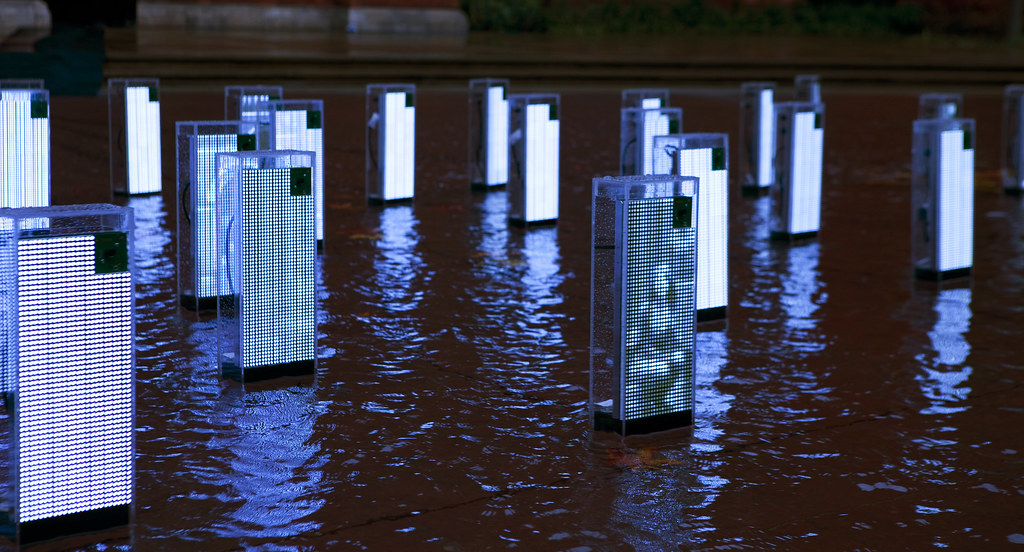
The key word in the title of ‘Decode: digital design sensations’ (which opens today at the Victoria and Albert museum in London) is ‘sensations’.
The exhibits comprise all manner of electronic installations, part-art, part-design, part theme park / science museum attraction … without the branding.
Below: Dandelion by YOKE
Some items are thought-provoking, a few are just puzzling, and several are quite beautiful – this is a museum of decorative arts, after all. But at last night’s boozy, noisy private view, the exhibits that got the most attention were the interactive ones, such as Body Paint (above) by Mehmet Akten, or Audience, where a battalion of shuffling, rotating mirrors keep angling themselves towards the viewer. Sensational stuff.
There were mirrors everywhere, both actual and metaphorical, since many of the works in the Interactivity strand of the show (the other two strands are Code and Network) were designed to make something new out of the image of the viewer. Daniel Rozin’s Weave Mirror (above) is fascinating as an object, even if you ignore the fact that the rotating elements are creating a pixellated image of whatever is standing in front of it.
Venetian Mirror, by a team from Fabrica including Sam Baron and Andy Cameron (below), uses a high definition video screen (within a frame made of genuine mirror glass) to make a kind of do-it-yourself Bill Viola. The display superimposes the last 1000 frames of whatever is captured by the movie camera, which means that subjects have to stay still for a while before a clear image appears on the screen.
The result is a slowly evolving, monochrome image that evokes memories of the earliest days of photography, when long exposures were necessary to make portraits (or an instant 4AD-style album cover). There’s also some genuinely contemporary music design in the form of an interactive version of Radiohead’s ‘House of Cards’ video (bottom), made without cameras.
Above: Venetian Mirror by Fabrica
Study for a mirror by rAndom International (below) was another source of baffled fun, while Mirror Mirror (top), an LED installation by Jason Bruges Studio, could be seen out in the John Madejeski garden, where the pond provided yet another set of reflections of our endlessly fascinating selves: electric Narcissus and digital Echo.
Eye 74, Winter 2009, features a Reputations interview with Karsten Schmidt, who designed the Decode identity.
Eye is available from all good design bookshops and online at the Eye shop. For a taste of the magazine, try Eye before you buy.

